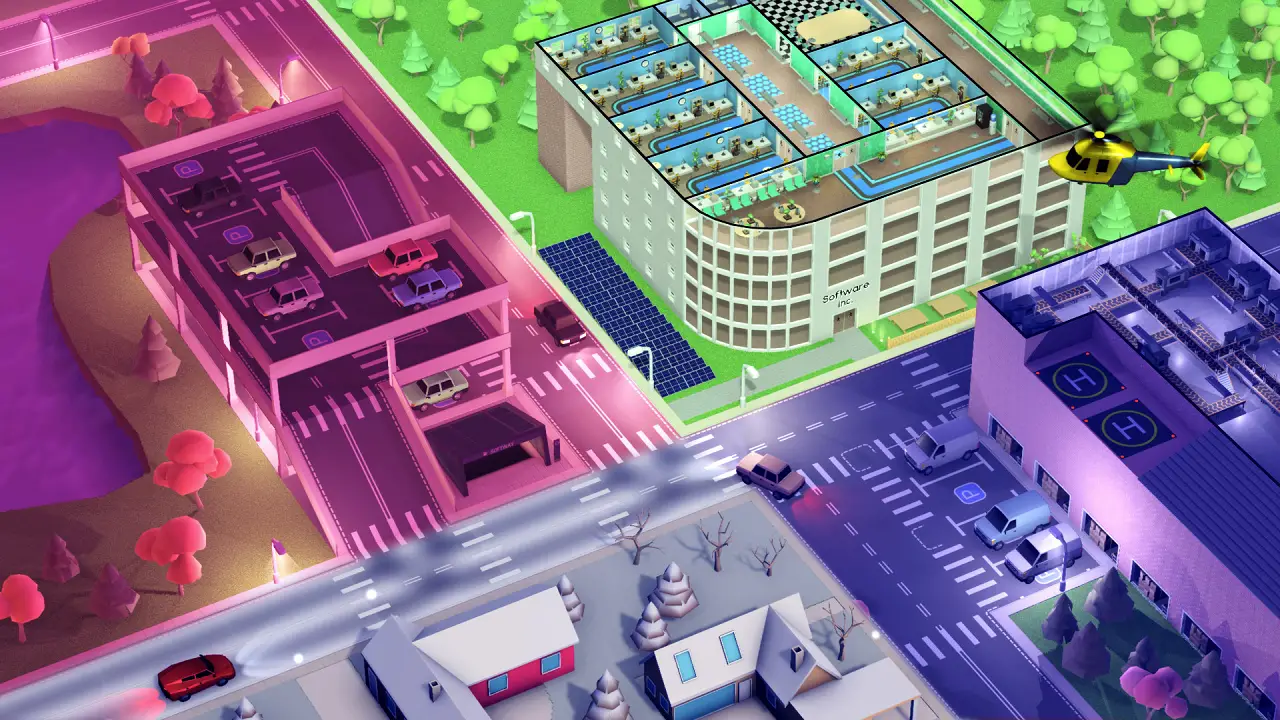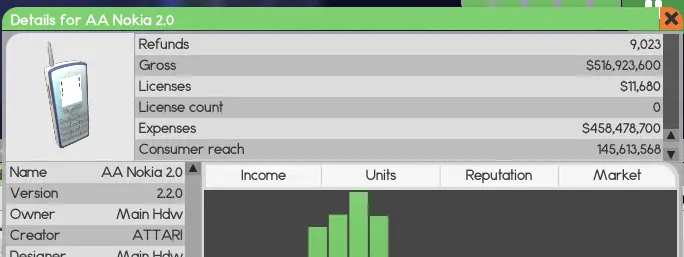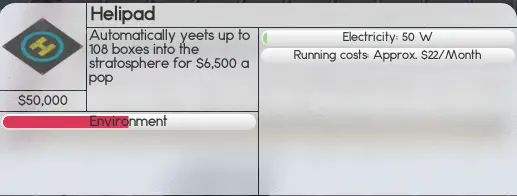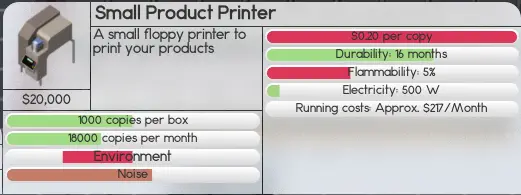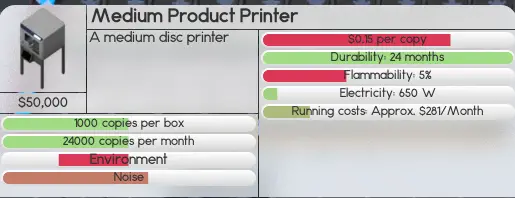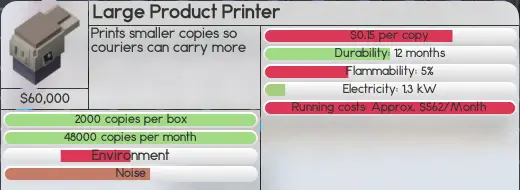That sounds like a great idea! Exploring the mechanics and inner workings of a game can be really interesting and informative for players who want to take their skills to the next level. I’m sure many people would appreciate learning from your experience and insights. Good luck with your new series!
Potential Buyers
There is a particular number that some players may not be aware of and may not understand its purpose. This number can be found in the Software Details window and is located at the bottom of the top part of the window. This number is known as the consumer reach.
The consumer reach number represents the maximum amount of sales that a software can achieve. When designing a new regular software, one must choose at least one operating system (OS) to set the base consumer reach number. It is advisable to select an OS with the most potential buyers, i.e., the one with the most active users, in order to maximize sales. This base consumer reach number represents the potential maximum sales that the software can achieve on release.
When porting the software to other OSes, the consumer reach number can be increased by adding the number of active users of the additional OSes. It is worth noting that if multiple OSes are selected for porting, they are added automatically upon completion of the task and not all at once at the end.
Computer OS has a fixed starting pool of around 130 million consumer reach. Consoles have a reach of 105 million, while phones have 145 million. Therefore, in theory, phones are the highest-selling type of product of all.
Games, antivirus, and office software must be developed on at least one OS before they can be ported to any other active OS. To sell as many copies as possible, the new release should be ported to any good OS with more than 250,000 active users (optionally not being older than seven years).
Games are the most profitable non-OS software because they can be ported to computers, consoles, and phones, giving them the biggest consumer reach number. Expansion packs can also provide additional sales, active users, and decent profit. Antivirus can be ported on PC OS and on phones but has the lowest base price. It is not recommended to start with antivirus as the first IP, and it is advisable to start with games that can be done in 2D, such as RTS, Sim, and Sport, as they tend to have frameworks with an okay level of technology right from the start. Antivirus is cheaper and cannot have expansion packs, making it less profitable than games.
Office software is more complex than 2D games, and there is always high competition with good market recognition. For office software to out-sell games, one must invest in add-ons, but the success of the software is heavily dependent on PC OSes on the market to have a high number of active users. It is not advisable to start with office software as the first IP.
OS is recommended as the starting IP only for players who know how to effectively develop it, as resources in the beginning of the game are scarce, and good monthly income is required to sustain additional designers.
Setting price for software
In the Software Design Document, there is a “Recommended price” field that may be capped in certain situations. While designing software with the latest technology and covering 100% of the market interest, I couldn’t understand why this was the case.
However, I learned from the Dev that the recommended price is influenced by the market. The game takes into account the average price of other products in the genre, considering outliers, recency, and complexity.
In simpler terms, the recommended price is based on the average game price for the genre, the release date of competing products, and the technology/market target/features I choose. This explains why sometimes I was getting a recommended price of $79.99 for a game, while other times, for a sequel, I received a recommended price of $74.59.
Let’s look at each factor separately:
- Average price of software in the genre
This cannot be controlled. The best hope is that the competition is also releasing high-priced software, so one can stay at a similar level with a much better quality product.
- Recent competition
I’m almost certain that I read in a tutorial or tooltip that the release date is crucial for sales. The game suggested carefully planning the release date by looking at the calendar, especially when competing products are being released. It has happened to me several times where the release had slow sales initially and then exploded a year later. I couldn’t find a clear reason for this, since all of my releases are outstanding/visionary, using the latest technology and covering 100% of the market interest. The only thing I can think of is that the competition released inferior quality software, or the best-selling software was taken off the market or had deprecated technology.
My suggestion is to examine the calendar and try to find “dry periods” when the release will be the only and best option, reaping all the profits afterwards (evil laugh).
In summary, if you want the recommended price to be as high as possible when creating the Design Document, you need to be aware of the following:
- For a sequel, how is the latest release performing? If it sold well and reached the maximum number of consumers, you can proceed. If the game is still selling well and there is a good number of active users, you might want to wait for a few months so that you don’t end up competing with your own product.
- Look at the current competition to determine the price range for software that has already been released and whether any release is peaking at the moment. If there are too many active releases or one is capturing a significant portion of the market, waiting for a few months might be wise.
- Always try to release the product with the latest technology, 100% market targeting, and enough features to warrant AAA release pricing.
- Finally, when selecting the release date, try to aim for a time between the releases of competing products so that there is no direct competition upon release.
Sequels And Active Users
I recently made a discovery that led me to a question: why do some of my sequels have only half or a third of the number of active users compared to the previous installation? For example:
- Doom 2D tech, 3rd sequel – 4 million active users
- Doom 3D tech, 4th sequel – 1.5 million active users
- Doom 5th sequel – 3 million active users
- Doom 6th sequel – 7 million active users
- Doom 7th sequel with Network added – 2 million active users
Well, it turns out that some fans of Doom 2D didn’t like Doom 3D. I asked Kenneth about the game mechanics behind it and he explained that when you release your first IP, it has zero fan base and market recognition. During its lifespan of three or more years, it will acquire a certain number of loyal fans that will buy and use the sequel.
When you release the sequel, the fan base will grow again (assuming it is at least great/inspiring) over time. Now, let’s consider the 5th sequel, which has a new technology – 3D. What happens? Well, the game will recalculate the fan base, and you will take a hit from your loyal fans who don’t like the new technology.
The bottom line is this: when you introduce a new technology (not a feature) to your IP, the fan base will take a hit and it will take one additional sequel for it to grow bigger than before. So, when developing games that require 3D to hit 100% market interest, keep in mind that the sequel in which you first implement 3D technology is going to have fewer active users.
But, Software Inc. is played for the long run, so implementing 3D at some point will hurt your fan base, but if it gives you the ability to cover 100% market interest and have an edge over your competition, it is a well-made investment.
Caution: I explained only the 3D example, but keep in mind that the same detrimental effect on the number of active users will happen when you implement Network technology.
Pro-tip: If you are developing a PC OS, try to research every technology available in 1985 and create the first OS with all of them implemented. I know that Network and 3D technologies are used by the competition much later, and there is no sense in making a 3D RPG for a single OS. However, you will have it before them and making sequels will be easier. This will also build your market recognition better for that new IP.
Optimal Printing for Helipad
This is interesting information that is usually missing from other tutorials.
When it comes to printing software, the production chain is easy to set up, but it is important to consider how many machines should be connected to the Helipad pickup point in order to avoid under or over-utilization.
Let’s start with the basics:
Helipad:
The number of boxes picked up per month is not shown, only the price per lift. Therefore, if you build a Helipad and check how many boxes you can deliver per month in the Manufacturing window, the number is 1440.
I didn’t go into detail on how many boxes are per lift, but I trust that 1440 is the total number of boxes that can be picked up between 00:00 and 23:59.
A small printer can print 18,000 copies per month. Dividing by 1,000 copies per box, we get:
1 small printer prints 18 boxes.
So, dividing 1440 by that number, we get:
1 Helipad can serve 80 small printers.
A medium printer can print 24,000 copies per month. Dividing by 1,000 copies per box, we get:
1 medium printer prints 24 boxes.
So, dividing 1440 by that number, we get:
1 Helipad can serve 60 medium printers.
A large printer can print 48,000 copies per month. Dividing by 2,000 copies per box, we get:
1 large printer prints 24 boxes.
So, dividing 1440 by that number, we get:
1 Helipad can serve 60 large printers.
As you can see, the number of medium and large printers is the same for one Helipad. However, it doubles the output for an even cheaper printing price.
